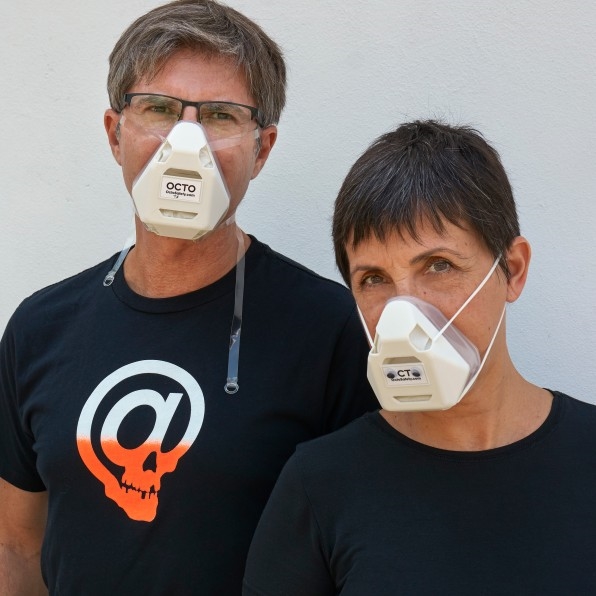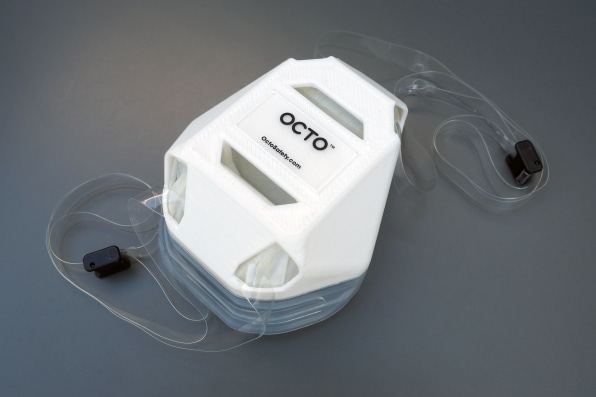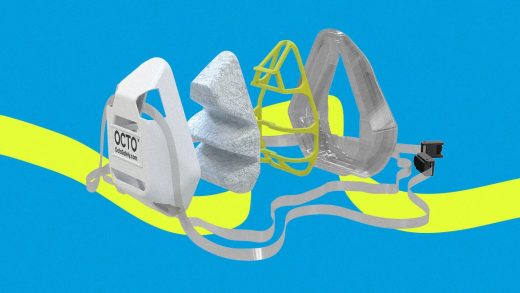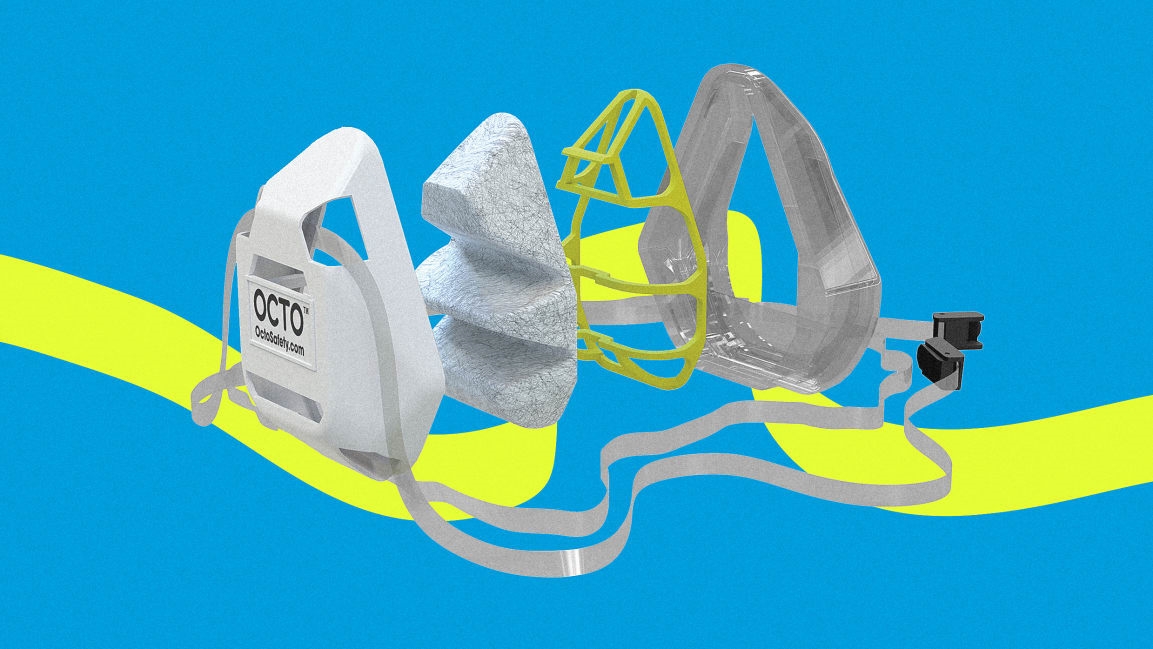This reusable mask is designed to fix the 28 major problems with the N95
During the SARS outbreak in Toronto in 2003, healthcare workers raised concerns about N95 masks, saying that the respirators were uncomfortable to wear for long shifts and could lead to headaches and shortness of breath. In the aftermath of SARS, the U.S. government issued a report arguing that the masks needed to be redesigned for future epidemics, citing 28 ways the masks needed to improve. Then the fear of pandemics faded from most people’s minds. But Tobias Franoszek and Natasha Duwin were working on making a new mask that fulfilled those benchmarks.
“N95 masks and mask technology hadn’t really changed in a very long time,” says Franoszek, cofounder of Octo Safety Devices, the company making the new mask, called the Octo Respirator Mask, or ORM. Three years ago, long before the emergence of COVID-19, Franoszek and Duwin started exploring alternatives, acquiring the rights to a new mask design that eventually became the ORM.

[Photo: Octo Safety Devices]
Unlike an N95, the mask is designed for reuse and can be sterilized by boiling. “The idea of having something be discarded after one use is anathema to us,” says Duwin. The antimicrobial filter inside is also reusable. The mask can be sterilized dozens of times, so if someone uses it infrequently—say, for weekly trips to the grocery store—it could last a year or more. In times between epidemics, it can be safely stored on a shelf for as long as 10 years without degrading. It filters out 99% of harmful particles, going beyond the 95% threshold required for N95 masks. Critically, it’s also designed to be comfortable to wear, even if someone has to keep it on for a 12-hour shift at a hospital.
In the SARS epidemic, “the statistics came back that 43% of casualties were healthcare workers,” says Franoszek. “That was surprising—healthcare workers are the ones that are very aware of the dangers of a virus because they’re physically treating it. They had a lot of anecdotal evidence of people just pulling off their masks, saying, ‘I can’t take this anymore.’”

N95 respirators weren’t originally used in healthcare—they were most commonly used in construction and manufacturing—but began to be used in hospitals in the early 1990s during a resurgence of tuberculosis. They were never designed to be particularly comfortable for hours of use, either for someone working in construction or in a hospital. The new mask, on the other hand, is made of soft silicone, making it much more comfortable. The silicone also seals tightly to the face without the complicated adjustments that are necessary to make an N95 mask fit; an N95 mask typically takes training and practice to learn to wear correctly.
A pleated filter increases airflow, making it more breathable while still protecting both the wearer and the people around them. In total, the mask addresses 26 out of the 28 recommendations in the government report on improving respirators. (The company plans to address the other two—making it possible to put the mask on without self-contaminating and making the mask transparent—but wanted to bring the mask to market as quickly as possible.)
At the start of 2020, the company had planned to finish the design and begin selling it through distributors for a variety of uses, from industry to healthcare, late in the year. As the new coronavirus spread, they rushed to bring it to market earlier, selling both to healthcare workers and the general public, even though they hadn’t intended to be a direct-to-consumer brand (though the company is still waiting on FDA or NIOSH approvals). “We started hearing about this strange thing happening in China and how they had closed down a city,” says Duwin. “We looked at each other and we were like, Oh my God, we have this thing in our hands that can really help people.”
(27)



